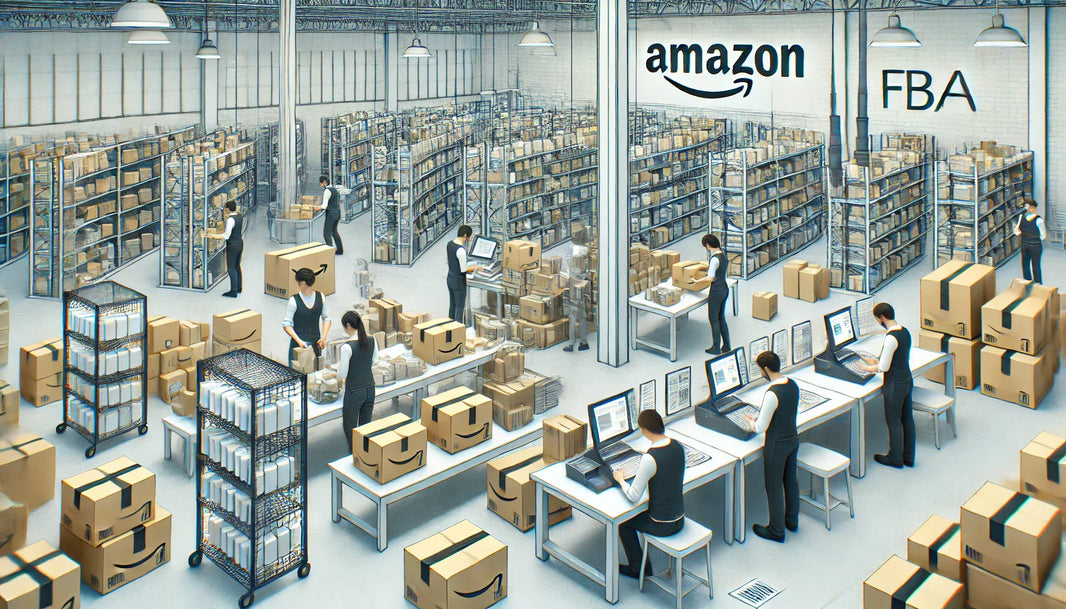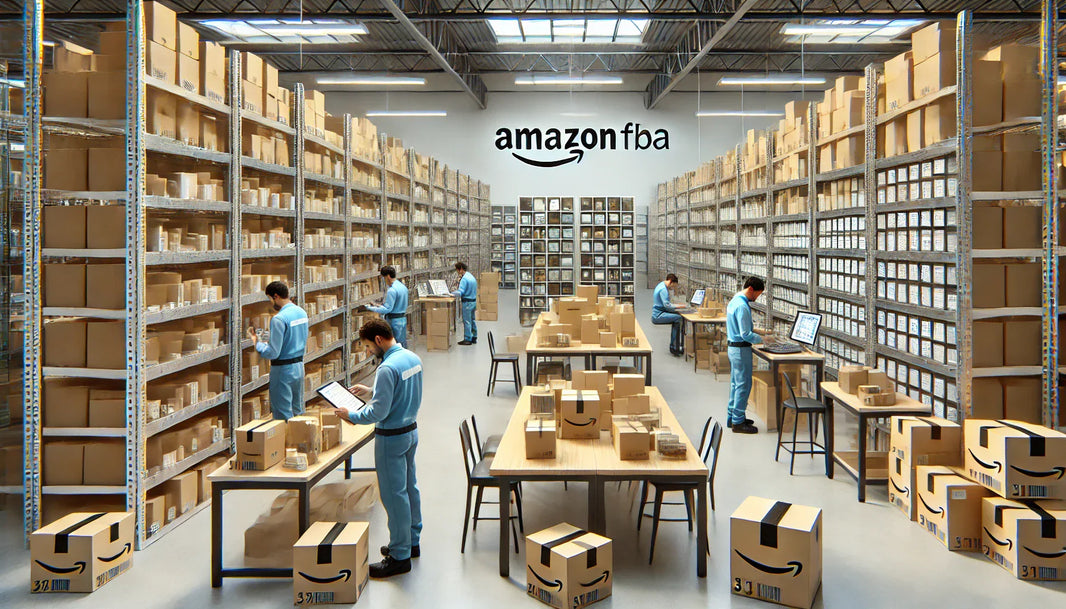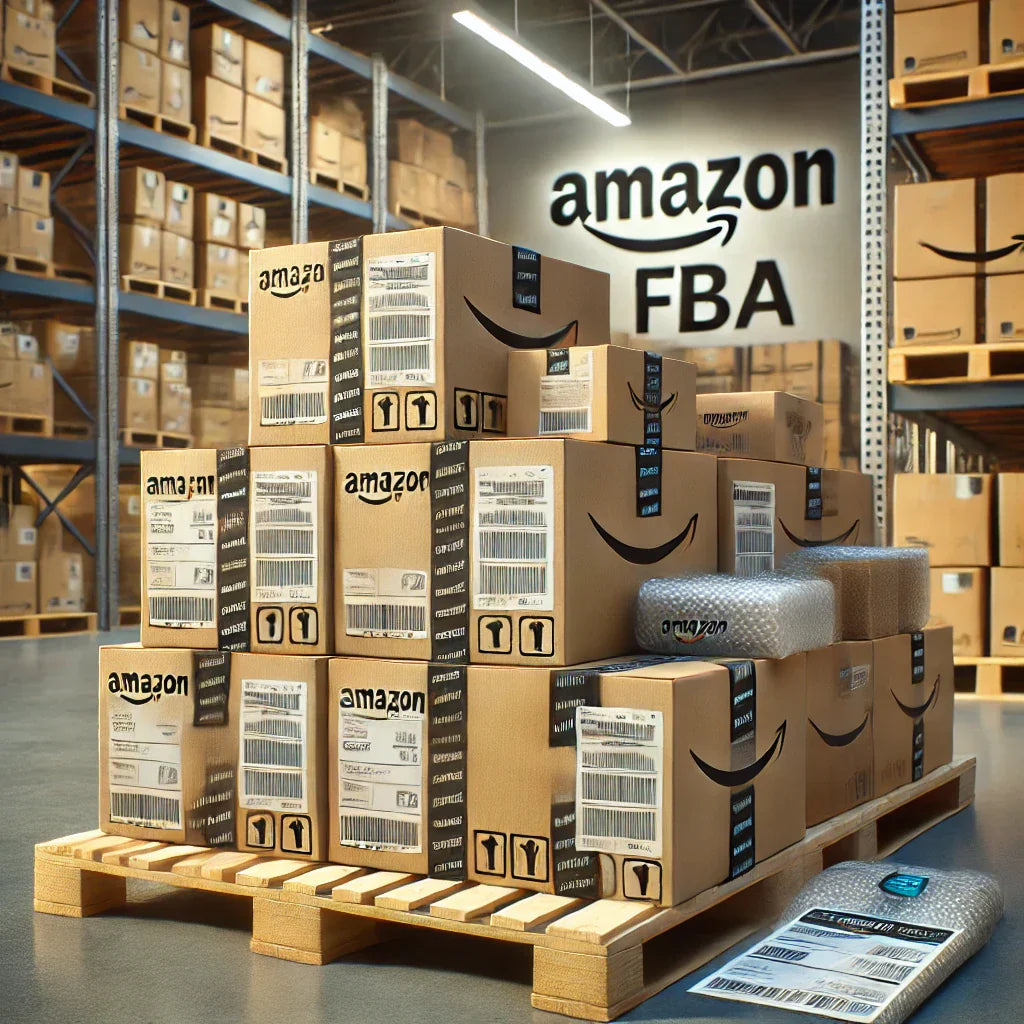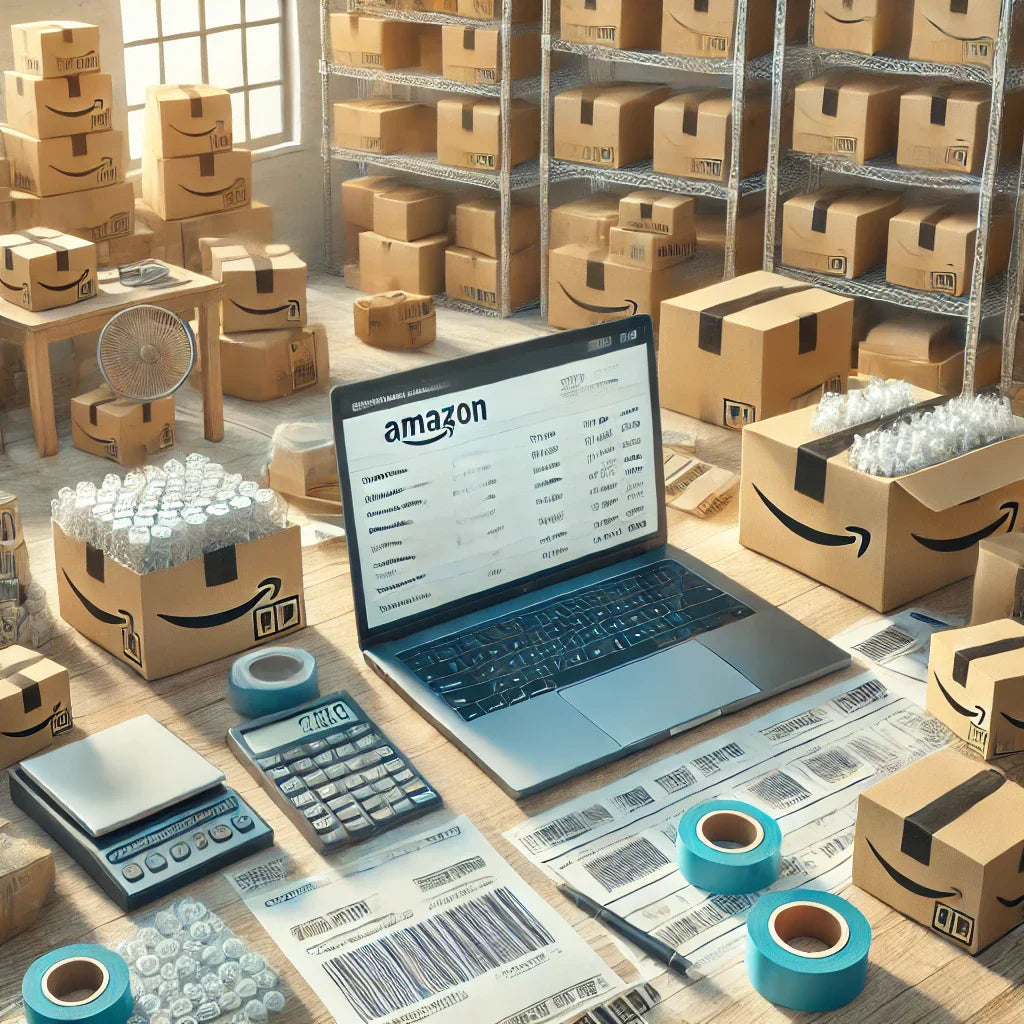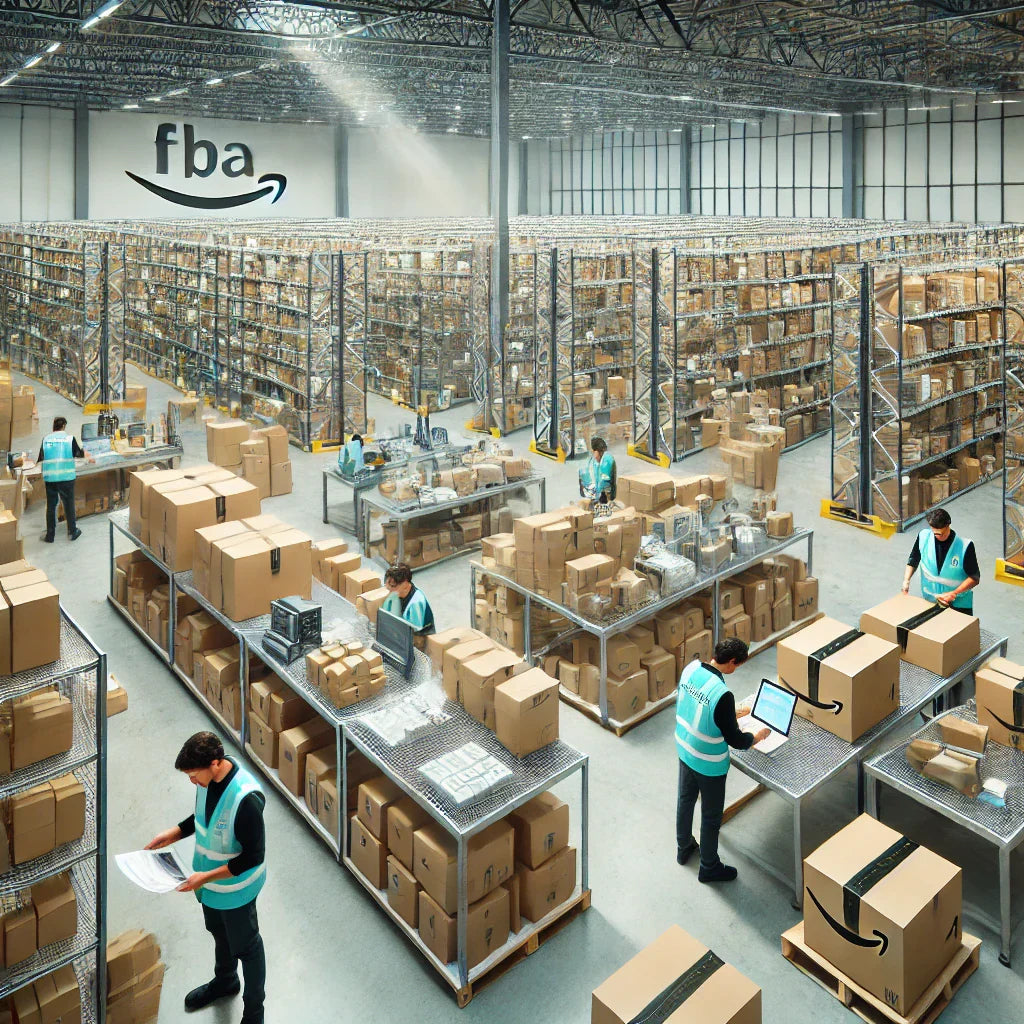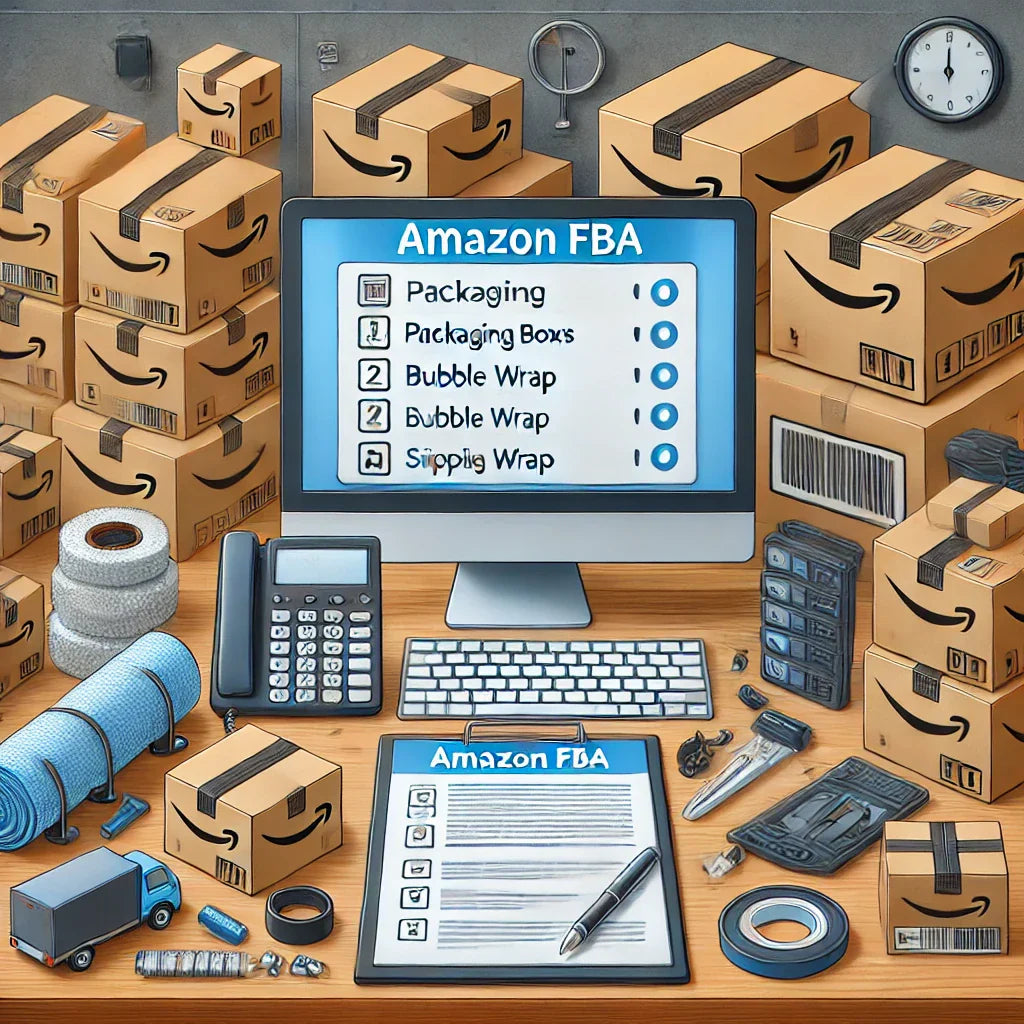The landscape of e-commerce has undergone a transformative journey, driven by advancements in distribution models. As the global demand for efficient and scalable fulfillment grows, traditional warehouse and distribution strategies are evolving to accommodate new consumer expectations. From the rise of third-party logistics (3PL) to the integration of wholesale distribution networks, businesses are optimizing operations to stay competitive. This evolution is not merely a shift but a strategic adaptation, influenced by emerging technologies, fluctuating market trends, and increasing competition within the supply chain. Understanding this progression is crucial for companies seeking to thrive in today’s dynamic digital marketplace.

The Early Days of E-commerce Distribution
When e-commerce began to take shape in the late 1990s and early 2000s, distribution models were rudimentary, often relying heavily on established retail distribution networks. Warehouses played a significant role in storing goods, but the processes were highly manual and lacked efficiency. Inventory management systems were basic, with many e-commerce businesses using spreadsheets or rudimentary software to track stock levels. This led to several inefficiencies, such as stockouts and long shipping times, which were unsustainable as consumer expectations began to shift.
In those early days, the focus was primarily on getting products from a warehouse to the consumer in a reasonably timely manner. Distribution networks lacked the sophistication needed to handle high volumes, and partnerships with logistics providers were limited. As e-commerce businesses started to scale, the limitations of these early models became apparent, necessitating a reevaluation of strategies to improve speed, reliability, and efficiency.
The Shift Towards Automated Warehouses
As the demand for faster and more reliable service increased, so did the need for improved warehouse operations. Automation emerged as a game-changer, transforming distribution models into more sophisticated, data-driven systems. Automated warehouses use robotics, artificial intelligence, and machine learning to streamline operations, reducing human error and speeding up the picking and packing process. Amazon, for example, has set the standard by introducing robotics in their fulfillment centers, making it possible to deliver products to customers in record time.
Automation has had a profound impact on distribution, particularly in improving inventory accuracy and reducing labor costs. Automated storage and retrieval systems (AS/RS) have become increasingly popular, allowing warehouses to store goods in a more organized and efficient manner. These systems use advanced algorithms to optimize the placement and retrieval of products, which not only saves time but also maximizes the use of space within the warehouse.
The Role of Data Analytics in Modern Distribution
Data analytics has become an integral part of e-commerce distribution, providing businesses with insights into consumer behavior, inventory management, and supply chain optimization. With the advent of big data, companies can forecast demand more accurately, reducing the risk of overstocking or understocking. Predictive analytics allows businesses to anticipate shifts in consumer behavior and adjust their distribution models accordingly.
For instance, by analyzing purchase patterns, a company can determine which products are most likely to be in demand during a particular season. This enables more efficient use of warehouse space and ensures that inventory levels are optimized to meet customer needs. Furthermore, real-time data tracking allows businesses to monitor the performance of their distribution networks, quickly identifying and addressing any issues that may arise.
The Rise of Third-Party Logistics (3PL)
As e-commerce businesses grew, many found that managing their own warehousing and distribution was not only costly but also inefficient. This led to the rise of third-party logistics (3PL) providers, which offer comprehensive logistics solutions, including warehousing, transportation, and fulfillment services. 3PL providers have become essential partners for many e-commerce businesses, allowing them to focus on their core operations while outsourcing logistics to experts.
The benefits of using a 3PL provider are numerous. They have the infrastructure and expertise needed to manage complex distribution networks, ensuring that products are delivered to customers quickly and efficiently. Moreover, 3PL providers often have multiple warehouse locations, which can significantly reduce shipping times and costs. This has been particularly advantageous for businesses looking to scale globally, as they can leverage the 3PL’s international distribution network to reach customers in different regions.
However, partnering with a 3PL provider is not without challenges. Businesses must carefully select a provider that aligns with their needs and ensure that communication and data sharing are seamless. Any breakdown in these areas can lead to delays, errors, and customer dissatisfaction. Therefore, it is crucial for e-commerce companies to establish strong relationships with their 3PL partners and continuously monitor performance.
Innovations in Last-Mile Delivery
Last-mile delivery, the final step in the distribution process where a product is delivered to the customer's doorstep, has become a focal point in e-commerce. It is often the most expensive and time-consuming part of the distribution process, and businesses are constantly seeking ways to optimize it. Innovations such as drone deliveries, autonomous delivery robots, and crowd-sourced delivery services have emerged as potential solutions to the challenges of last-mile delivery.
Companies like FedEx and UPS are experimenting with drones to deliver packages in rural and hard-to-reach areas, while urban areas are seeing the rise of autonomous delivery robots. These technologies not only have the potential to speed up delivery times but also reduce costs associated with traditional delivery methods. Additionally, crowd-sourced delivery services, where gig workers deliver packages using their own vehicles, have become increasingly popular. This model offers greater flexibility and can be scaled quickly to meet spikes in demand.
Despite these advancements, last-mile delivery still presents significant challenges, particularly in densely populated urban areas. Traffic congestion, parking limitations, and delivery window constraints can complicate the process. E-commerce businesses must continually adapt their distribution strategies to address these challenges and meet the growing expectations of consumers for same-day or next-day delivery.
The Impact of Wholesale Distribution on E-commerce
Wholesale distribution has also evolved significantly in the e-commerce era, driven by the need for more agile and responsive supply chains. Traditionally, wholesale distribution involved large quantities of products being shipped to retailers, who would then sell them to consumers. However, the rise of e-commerce has blurred the lines between wholesale and direct-to-consumer (DTC) models. Many wholesalers are now exploring ways to sell directly to consumers, bypassing traditional retail channels.
This shift has been facilitated by the use of digital platforms that allow wholesalers to reach a broader audience. By selling directly to consumers, wholesalers can increase their profit margins and gain more control over their brand and customer experience. However, this approach also requires significant investment in digital infrastructure and logistics capabilities, as wholesalers must be able to fulfill individual orders quickly and efficiently.
Moreover, wholesale distribution networks are becoming more integrated with e-commerce platforms, allowing for better coordination and visibility across the supply chain. This integration helps reduce lead times, improve inventory management, and ensure that products are always available when customers need them. It also enables more dynamic pricing strategies, as wholesalers can adjust prices based on real-time demand and market conditions.

The Future of E-commerce Distribution Models
Looking ahead, the future of e-commerce distribution is likely to be shaped by continued advancements in technology and changing consumer expectations. The use of artificial intelligence and machine learning will become even more prevalent, enabling greater automation and efficiency throughout the supply chain. Smart warehouses, equipped with Internet of Things (IoT) devices, will be able to communicate with each other and optimize operations in real time.
Sustainability will also play a significant role in the evolution of distribution models. As consumers become more environmentally conscious, businesses will need to adopt greener practices, such as using electric delivery vehicles, optimizing delivery routes to reduce emissions, and sourcing materials sustainably. Companies that prioritize sustainability in their distribution strategies will be better positioned to attract and retain customers in the long run.
Additionally, the concept of "micro-fulfillment centers" is gaining traction. These small, urban warehouses are designed to fulfill orders quickly and are strategically located to reduce delivery times. By placing inventory closer to where customers live, e-commerce businesses can offer faster and more efficient delivery services. This approach also allows for greater flexibility in managing inventory, as products can be moved between micro-fulfillment centers based on real-time demand.
Challenges and Considerations
Despite the many advancements in e-commerce distribution, several challenges remain. One of the biggest issues is managing the complexity of global supply chains, which can be disrupted by factors such as geopolitical tensions, natural disasters, and economic fluctuations. E-commerce businesses must be agile and resilient, with contingency plans in place to address these disruptions.
Another challenge is the growing pressure to offer free or low-cost shipping. While this is a key driver of customer satisfaction, it can be costly for businesses, particularly small and medium-sized enterprises (SMEs). Companies must find a balance between meeting customer expectations and maintaining profitability, which often involves optimizing their distribution networks to minimize costs.
Labor shortages and rising labor costs are also concerns, especially for warehouses that rely heavily on human workers. While automation can help mitigate some of these issues, it is not a perfect solution. There will always be a need for human oversight and intervention, particularly in complex or unpredictable situations. E-commerce businesses must invest in training and retaining skilled workers, as well as exploring innovative ways to improve efficiency.
The Rise of Omnichannel Distribution Models
Another significant trend in e-commerce distribution is the rise of omnichannel fulfillment. Consumers today expect a seamless shopping experience, whether they are purchasing items online, in-store, or through a combination of both. Omnichannel distribution models are designed to provide this cohesive experience by integrating various sales and fulfillment channels into a single, efficient system.
Retailers are increasingly adopting strategies that allow them to use physical stores as distribution hubs. For instance, buy-online-pick-up-in-store (BOPIS) and curbside pickup have become popular options, especially in the wake of the COVID-19 pandemic. By leveraging their brick-and-mortar locations, retailers can fulfill online orders faster and reduce shipping costs. This approach not only enhances the customer experience but also maximizes the utility of existing retail space.
Additionally, omnichannel distribution requires sophisticated inventory management systems that provide real-time visibility across all channels. Businesses must be able to track inventory levels in warehouses, stores, and even in transit to ensure that products are always available where and when they are needed. This level of coordination can be challenging to achieve, but it is essential for delivering a consistent and efficient customer experience.
Omnichannel strategies are also driving innovations in warehouse design and operations. For example, some companies are adopting "dark stores," which are essentially retail locations converted into mini-fulfillment centers that cater exclusively to online orders. Dark stores are strategically located in urban areas to ensure fast delivery times and are equipped with advanced picking and packing technology to increase efficiency. As more retailers embrace omnichannel distribution, the lines between traditional retail and e-commerce continue to blur.
The Influence of Consumer Expectations on Distribution
Consumer expectations have been a major driving force behind the evolution of e-commerce distribution models. Today’s consumers demand speed, convenience, and flexibility, and they are not afraid to take their business elsewhere if these needs are not met. The "Amazon effect" has raised the bar for the entire industry, making two-day or even same-day delivery the new standard.
To meet these high expectations, businesses are investing heavily in technology and infrastructure. Real-time order tracking, flexible delivery options, and seamless return processes are now considered essential features of a top-tier e-commerce experience. Distribution networks must be agile and responsive, capable of adapting to changing consumer demands at a moment’s notice.
Another important consideration is the growing preference for personalized and customizable shopping experiences. Consumers want more control over how and when their orders are delivered, which has led to the development of features like delivery time slots and package lockers. Businesses that can offer these options have a competitive advantage, as they are better able to cater to the diverse needs of their customers.
Moreover, the emphasis on convenience has also influenced packaging and sustainability practices. Consumers are increasingly aware of the environmental impact of their purchases and are demanding more eco-friendly options. This has led to innovations in packaging design, such as biodegradable materials and reusable packaging solutions. E-commerce businesses must strike a balance between providing convenient and fast service while also minimizing their environmental footprint.
Technological Advancements Shaping the Future of Distribution
The role of technology in shaping e-commerce distribution cannot be overstated. Innovations such as artificial intelligence (AI), blockchain, and the Internet of Things (IoT) are revolutionizing how goods are stored, managed, and delivered. These technologies not only improve efficiency but also provide valuable insights that help businesses make more informed decisions.
Artificial Intelligence and Machine Learning
AI and machine learning are transforming every aspect of distribution, from inventory management to customer service. In warehouses, AI-powered robots are being used to sort and pack items with incredible speed and accuracy. These robots can work 24/7, significantly reducing labor costs and increasing throughput. Machine learning algorithms are also being used to optimize delivery routes, taking into account factors such as traffic, weather, and order volume to ensure that packages are delivered as efficiently as possible.
Predictive analytics, another application of AI, allows businesses to anticipate future demand and adjust their operations accordingly. By analyzing historical sales data and external factors like seasonality, machine learning models can forecast which products will be in demand and when. This enables better inventory planning and reduces the risk of overstocking or understocking, ultimately improving the efficiency of the entire distribution network.
Blockchain Technology
Blockchain is emerging as a powerful tool for enhancing transparency and security in the supply chain. By providing a decentralized and tamper-proof ledger of transactions, blockchain allows all stakeholders in the supply chain to access accurate and up-to-date information. This is particularly useful for tracking the movement of goods from the manufacturer to the consumer, ensuring that products are authentic and have not been tampered with.
For e-commerce businesses, blockchain can help streamline the distribution process by reducing the need for intermediaries and minimizing paperwork. It also provides greater visibility into the supply chain, making it easier to identify and address any issues that arise. As blockchain technology continues to evolve, it has the potential to revolutionize how e-commerce businesses manage their distribution networks.
Internet of Things (IoT)
IoT technology is playing a crucial role in creating smarter and more connected distribution systems. IoT devices, such as sensors and RFID tags, are being used to monitor the condition of goods in real time. For example, temperature-sensitive products like pharmaceuticals or perishable food items can be tracked throughout the supply chain to ensure they are stored and transported under optimal conditions.
IoT also enables better asset management in warehouses. Smart shelves equipped with sensors can automatically update inventory levels, reducing the risk of stock discrepancies and improving order fulfillment accuracy. Additionally, IoT technology can be used to track the location of delivery vehicles and monitor traffic conditions, allowing for more efficient route planning and real-time updates to customers.

The Role of Sustainability in Distribution
As mentioned earlier, sustainability is becoming an increasingly important consideration in e-commerce distribution. The environmental impact of fast shipping and excess packaging is a growing concern for consumers, and businesses are being pressured to adopt more sustainable practices. This has led to the development of new strategies and technologies aimed at reducing the carbon footprint of e-commerce operations.
One approach is the use of electric and alternative fuel vehicles for last-mile delivery. Companies like Amazon and UPS are investing in electric delivery fleets to reduce greenhouse gas emissions. In addition, some businesses are exploring the use of bicycles or even electric scooters for deliveries in urban areas, where traffic congestion is a major issue. These eco-friendly delivery methods not only reduce emissions but also help to alleviate traffic problems in densely populated cities.
Warehouses are also being redesigned with sustainability in mind. Many companies are investing in energy-efficient lighting, solar panels, and other green building technologies to reduce their environmental impact. Some warehouses are even implementing water recycling systems and using automated systems to minimize energy consumption. These efforts not only benefit the environment but also lead to cost savings in the long run.
Sustainability also extends to packaging. As e-commerce continues to grow, the amount of waste generated from packaging materials is a significant concern. Businesses are exploring alternatives such as recycled materials, minimalist packaging designs, and reusable shipping containers. Some companies are even offering incentives to customers who choose eco-friendly delivery options, such as slower shipping in exchange for reduced environmental impact.
The Importance of Collaboration in Distribution
Collaboration is becoming increasingly important in the world of e-commerce distribution. Businesses are recognizing that no single company can optimize the supply chain on its own, and partnerships are essential for achieving greater efficiency and scalability. Collaboration can take many forms, from working with logistics providers to sharing warehouse space with other retailers.
One example of this is the rise of shared warehousing and fulfillment centers. By pooling resources, businesses can reduce costs and improve service levels. Shared facilities are particularly beneficial for small and medium-sized enterprises (SMEs) that may not have the resources to invest in their own distribution infrastructure. These collaborative arrangements also enable companies to scale quickly and efficiently, as they can tap into an established network of warehouses and distribution centers.
Another area where collaboration is crucial is in data sharing. E-commerce businesses and logistics providers must work together to share real-time data on inventory levels, order status, and delivery times. This level of transparency allows for better coordination and helps prevent issues such as stockouts or delivery delays. Advanced data-sharing platforms are making it easier for businesses to collaborate and optimize their distribution networks.
The concept of "coopetition" is also gaining traction, where competitors collaborate in certain areas to achieve mutual benefits. For example, rival e-commerce companies may share delivery vehicles or warehouse space to reduce costs and minimize environmental impact. While this may seem counterintuitive, it can be a win-win situation for all parties involved, as it allows for greater efficiency and resource utilization.
The Role of Government and Policy in Shaping Distribution
Government regulations and policies play a significant role in shaping the distribution landscape, particularly when it comes to international trade and transportation. Regulations on emissions, labor standards, and cross-border trade can have a significant impact on how e-commerce businesses operate. Companies must stay up-to-date with these regulations to ensure compliance and avoid costly fines or disruptions to their supply chains.
For instance, stricter emissions regulations in certain regions are pushing companies to adopt greener transportation methods. Governments are also investing in infrastructure projects, such as the construction of new ports, highways, and railway networks, to support the growing demand for efficient distribution. Public-private partnerships are becoming more common, with governments and businesses working together to develop infrastructure that benefits both the economy and the environment.
Trade policies and tariffs are another important consideration, especially for e-commerce businesses that source products internationally. Changes in trade agreements can affect the cost and speed of importing goods, and businesses must be prepared to adapt their distribution strategies accordingly. The recent disruptions caused by global trade tensions and the COVID-19 pandemic have highlighted the importance of having a flexible and resilient supply chain.
Moreover, governments are increasingly focusing on consumer protection and data privacy. Regulations such as the General Data Protection Regulation (GDPR) in Europe have implications for how e-commerce businesses collect, store, and use customer information. Compliance with these regulations is crucial, as any breach can result in significant financial penalties and damage to a company's reputation. Distribution models must therefore be designed with data security in mind, ensuring that customer information is protected at every stage of the fulfillment process.
Emerging Trends in E-commerce Distribution Models
The landscape of e-commerce distribution is constantly evolving, with new trends and innovations emerging to meet the demands of a rapidly changing market. Let’s explore some of the key trends that are shaping the future of e-commerce distribution and what they mean for businesses and consumers alike.
Micro-Fulfillment Centers
As urban populations continue to grow and consumer expectations for faster delivery times increase, micro-fulfillment centers are becoming a vital component of e-commerce distribution strategies. These small, highly automated warehouses are strategically located in urban areas, enabling retailers to fulfill orders in a matter of hours rather than days. Unlike traditional warehouses, which are often located on the outskirts of cities, micro-fulfillment centers are placed closer to where customers live and work.
Micro-fulfillment centers use advanced robotics and AI-driven technology to optimize space and speed up the picking and packing process. The compact size of these centers allows them to operate in spaces as small as the back of a retail store or an urban warehouse. Retailers like Walmart and Kroger are already investing heavily in micro-fulfillment technology to meet the rising demand for same-day and next-hour delivery.
The impact of micro-fulfillment centers is significant, as they help reduce last-mile delivery costs and improve customer satisfaction. However, implementing this model comes with challenges, such as the high upfront investment required for automation technology and the complexities of managing inventory across multiple locations. Despite these challenges, micro-fulfillment centers are likely to become a standard feature of urban distribution networks in the near future.
Flexible and On-Demand Warehousing
The concept of flexible and on-demand warehousing is gaining traction as e-commerce businesses seek more agile and cost-effective solutions for managing inventory. Rather than committing to long-term leases for warehouse space, companies can now rent storage space on a temporary or seasonal basis, depending on their needs. This model is particularly beneficial for businesses that experience fluctuations in demand, such as those in the fashion or holiday retail sectors.
On-demand warehousing platforms connect businesses with warehouse operators that have excess capacity, creating a marketplace for flexible storage solutions. This approach not only reduces costs but also allows businesses to scale their operations more efficiently. For example, during peak seasons like Black Friday or the holiday shopping period, companies can quickly access additional storage space without the burden of long-term commitments.
Moreover, flexible warehousing solutions often come with integrated logistics and fulfillment services, making it easier for businesses to manage their supply chains. This trend is transforming the traditional warehousing industry, making it more dynamic and responsive to the needs of e-commerce companies. As consumer expectations for faster delivery times continue to rise, the demand for flexible and on-demand warehousing is likely to increase.

The Impact of Direct-to-Consumer (DTC) Models on Distribution
The direct-to-consumer (DTC) model has revolutionized the way products are distributed and sold, bypassing traditional retail channels and selling directly to end consumers. This approach has gained significant popularity in recent years, driven by the success of brands like Warby Parker, Dollar Shave Club, and Glossier. The DTC model offers several advantages, including greater control over branding, higher profit margins, and a more personalized customer experience.
However, the DTC model also presents unique challenges, particularly in the area of distribution. Without the support of established retail partners, DTC brands must invest heavily in their own fulfillment and logistics infrastructure. This often involves setting up dedicated warehouses, partnering with third-party logistics providers, or leveraging micro-fulfillment centers to ensure fast and reliable delivery.
One of the key aspects of a successful DTC distribution strategy is maintaining a strong focus on customer experience. Since DTC brands interact directly with consumers, they have the opportunity to offer personalized delivery options and seamless return processes. Many DTC companies are also experimenting with subscription-based models, which require a well-coordinated supply chain to ensure timely and consistent delivery of products.
In addition to logistics challenges, DTC brands must also navigate the complexities of managing inventory and demand forecasting. Without the buffer of retail partners to absorb excess inventory, DTC companies need to be highly efficient in their supply chain management. This often involves using data analytics and AI to optimize inventory levels and predict demand with greater accuracy.
Innovations in Packaging and Returns Management
Packaging and returns management are critical components of the e-commerce distribution process, and they have a direct impact on customer satisfaction and sustainability. As e-commerce continues to grow, businesses are under increasing pressure to minimize waste and offer more environmentally friendly packaging solutions. At the same time, the rise in online shopping has led to a significant increase in returns, creating new challenges for distribution networks.
Eco-Friendly Packaging Solutions
Sustainability has become a major concern for both consumers and businesses, and packaging is one area where significant improvements can be made. Many e-commerce companies are now exploring eco-friendly packaging options, such as biodegradable materials, recycled cardboard, and reusable packaging. For example, clothing retailer Everlane has committed to using 100% recycled materials for all of its shipping bags and boxes.
In addition to using sustainable materials, companies are also looking at ways to reduce the overall volume of packaging. This can involve using right-sized packaging solutions that minimize excess space and reduce the need for additional filler materials. Some businesses are also experimenting with innovative designs, such as collapsible or modular packaging, which can be reused by customers.
The benefits of eco-friendly packaging go beyond reducing environmental impact. Consumers are increasingly making purchasing decisions based on a brand’s commitment to sustainability, and offering green packaging can be a powerful differentiator. However, transitioning to eco-friendly packaging can be costly, and businesses must carefully balance sustainability initiatives with profitability.
Streamlining the Returns Process
The ease and efficiency of the returns process are critical factors that influence customer loyalty and repeat business. However, managing returns can be a logistical nightmare for e-commerce companies, as it often involves reverse logistics, inventory management, and quality control. To address these challenges, businesses are investing in technology and infrastructure to streamline returns and minimize their impact on the supply chain.
One approach is to use centralized returns hubs, where returned items are collected, inspected, and either restocked, recycled, or disposed of. This helps to reduce the complexity of managing returns across multiple warehouses and ensures that products are quickly re-entered into the inventory system. Some companies are also using automated systems to speed up the returns process, such as AI-powered image recognition to assess the condition of returned items.
Another trend is the use of customer-friendly return policies, such as offering free returns or allowing customers to drop off returns at designated locations. Businesses are also exploring ways to minimize returns in the first place, such as using virtual try-on technology for apparel or providing more accurate product descriptions and images. By reducing the number of returns and improving the efficiency of the returns process, e-commerce companies can significantly enhance their distribution networks.
Regional and Cross-Border Distribution Challenges
Expanding into new markets is a key growth strategy for many e-commerce businesses, but it comes with a host of distribution challenges, particularly when dealing with cross-border logistics. Navigating customs regulations, managing currency fluctuations, and ensuring timely delivery across international borders are just a few of the obstacles that companies must overcome.
Navigating Customs and Regulations
One of the biggest challenges of cross-border e-commerce is navigating the complex web of customs regulations and import/export laws. Each country has its own set of rules governing the importation of goods, and failure to comply with these regulations can result in delays, fines, or even the seizure of shipments. To avoid these issues, businesses must invest in robust customs management systems and work closely with logistics partners who have expertise in international trade.
Additionally, the paperwork required for cross-border shipments can be overwhelming, particularly for small and medium-sized enterprises (SMEs) that lack the resources of larger companies. Automating the documentation process using technology such as electronic data interchange (EDI) can help streamline customs procedures and reduce the risk of errors. E-commerce businesses must also stay informed about changes in trade agreements and tariffs, as these can have a significant impact on the cost and speed of international shipments.
Managing Currency Fluctuations
Currency fluctuations are another challenge that e-commerce businesses face when distributing products internationally. Exchange rate volatility can affect profit margins and make pricing strategies more complex. To mitigate this risk, some companies choose to price their products in local currencies, while others use financial instruments such as forward contracts to lock in favorable exchange rates.
Moreover, businesses must consider the impact of currency fluctuations on their supply chain costs, such as the cost of importing raw materials or paying international logistics providers. Financial planning and risk management strategies are essential for navigating these challenges and ensuring that the business remains profitable despite currency volatility.
Optimizing Cross-Border Logistics
Efficient cross-border logistics are crucial for providing a seamless shopping experience to international customers. This often involves partnering with multiple logistics providers and using distribution hubs strategically located near key markets. For example, some e-commerce companies use free trade zones or bonded warehouses, which allow goods to be stored and processed without incurring customs duties until they are shipped to their final destination.
Cross-border logistics also require careful planning and coordination to minimize shipping times and costs. This can include optimizing delivery routes, consolidating shipments, and using technology to track packages in real time. By leveraging advanced logistics solutions and working with experienced partners, e-commerce businesses can overcome the complexities of international distribution and expand their global reach.

Conclusion
The evolution of distribution models in e-commerce has been driven by a relentless pursuit of efficiency, speed, and customer satisfaction. From the early days of manual warehouses to today’s automated and data-driven distribution networks, the industry has come a long way. The rise of third-party logistics, innovations in last-mile delivery, and the growing importance of wholesale distribution have all played a significant role in shaping the current landscape.
As we look to the future, the continued integration of technology and a focus on sustainability will be crucial. E-commerce businesses must remain adaptable and forward-thinking, always ready to embrace new opportunities and overcome challenges. By doing so, they can ensure that their distribution models remain efficient, scalable, and aligned with the ever-changing demands on today’s e-commerce landscape.
Read More
- Understanding Distribution: Key Concepts and Strategies
- The Role of Wholesale Distribution in Modern Supply Chains
- How to Optimize Distribution Channels for Your Business
- Distribution Challenges and How to Overcome Them
- Best Practices for Efficient Distribution Management
- How Technology is Transforming the Distribution Industry


